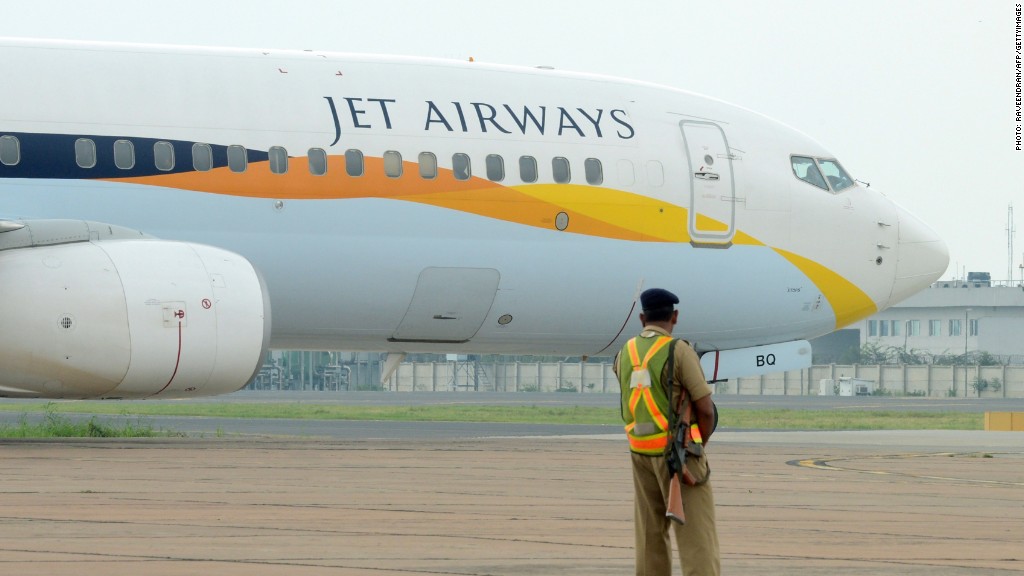
India's airline industry is a mess. Taxes are sky-high, infrastructure is poor and profit margins are razor thin. A string of carriers have gone out of business, and many others are struggling to stay afloat.
Yet the big winners might be price-conscious consumers -- and any carrier strong enough to survive the price wars that have made India the cheapest place to fly on Earth.
Consider this: In India, airlines charge an average $10.20 to travel 100 kilometers, according to a survey by GoEuro. Air travelers in China pay twice as much to go the same distance, and Brazilians pay four times more. Even India's rail lines demand a higher price per kilometer.
The airlines would like to charge more, but they are locked in a race to capture market share -- sometimes operating flights at a loss. Even Air India, the state-owned recipient of seemingly endless bailouts, offers fares that would be more suited to a budget airline.
Helped along by pricing chaos, private carrier Kingfisher Airlines has gone out of business. The government was forced late last year to rescue SpiceJet, the country's third largest carrier.

In total, Indian airlines have reported accumulated losses of more than $10 billion in the last seven years and thereby increased their cumulative debt burden to $16 billion, according to a recent report by industry analytics firm Center for Aviation.
Yet as with many sectors in India, optimism is creeping in around the edges. Funds from foreign investors have provided a boost, and analysts hope that newly-elected Prime Minister Narendra Modi will push through meaningful reforms.
Related: Indian civil servant finally fired after epic 24-year absence
The potential for rapid growth is hard to ignore. India's cities are rapidly growing, and middle-class consumers have money to spend on luxuries like air travel.
Anurag Bhatia, Executive Director of Bird Group, a provider of aviation services to India's biggest airports, believes airlines have a long way to go before tapping the true potential of the market.
"There are 25 to 30 million people that use airplanes in India, whereas there are nearly 300 million that can actually afford to travel but don't because of unavailability of flights or the lack of airports," he said.
Foreign players have taken note. Abu Dhabi-based Etihad Airways took a 24% stake in Jet Airways, India's second largest airline by market share. Singapore Airlines has launched a joint venture with Indian conglomerate Tata Group (Tata also has a deal with AirAsia).
Related: Indian startup funding up 261%
These external entrants have sprung the new government into action as well.
The Modi-led government has pledged to build 200 low-cost airports in tier-II and tier-III cities across the country over the next 20 years to boost regional connectivity.
And the Aviation Ministry is looking to reduce airport charges, which are amongst the highest in the region. The government plans to list Airports Authority of India -- the state-owned airport operator - - to help increase efficiency and improve transparency.
Yet more needs to be done, especially on the issue of fuel taxes, which airlines say are among their biggest costs. The tax on jet fuel can range from 4% in some Indian states to as high as 30% in others.
Dhiraj Mathur, head of PwC India's aviation department, said the high tax rates are "irrational."
"If you levy such high taxes, then how will these airlines operate?" he said. "That's why domestic airlines are finding it hard to become profitable."


